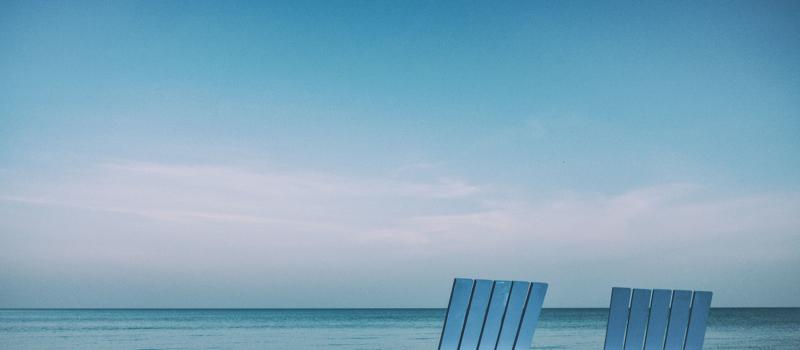A Trip to the Beach Doesn’t Mean A Vacation from Bugs
Posted by Mosquito Squad
June 22, 2020

The summer solstice has come and gone, and in most parts of the country, the days are now long and hot. Over the coming weeks, this will leave many of us looking for a refuge at our nearest beach. But while you’re enjoying the sun and sand, some pests could be enjoying you. Here are a few common bugs that have beach bum reputations.
Sand Fleas
‘Sand fleas’ is a broad term used to describe a few species of animals. However, the sand fleas we most commonly associate with the beach are crustaceans. Seaweed and plankton are more natural to their diet, but they aren’t opposed to nibbling on humans. Sand flea bites are mostly found on feet, ankles, and legs since they can't jump very high – usually no more than 20 cm. Sand flea bites are visually similar to the flea bites you find on pets. Bites form in clusters of two or three and typically have a red halo surrounding the bite. Itchiness can occur, and excessive scratching can inflame the bite. While the bites can be annoying, sand fleas do not present danger or risk for disease. To avoid getting bit:
- Avoid the beach at dawn or dusk when sand fleas are most active
- Don’t lay directly in the sand, lay on a blanket or towel, or sit in a chair
- Avoid the beach right after a heavy rain, as the damper conditions increase sand flea activity
Beach Wolf Spiders
While this designation of spider isn’t exclusive to the beach, a sandy beach is its most commonly preferred habitat. They are masters of disguise, as their color variates so that they can be camouflaged into whatever shade of white sandy beach they occupy. Beach wolf spiders don’t build webs but are instead free-range predators that scurry along the beach preying on small invertebrate. They are not aggressive insects, but they will bite if threatened. While their bites are venomous, they are not considered dangerous to humans. Bites from beach wolf spiders can look similar to a bee-sting and can be itchy due to the venom the spider has injected. To avoid a run-in with a beach wolf spider:
- Avoid pitching your umbrella near dunes, driftwood, or other debris, as this is where they commonly burrow
- Know that they are more active at dusk or on dreary days
Horse Flies
As you might be able to assume from their nickname, these nuisances commonly feed on horses and other livestock. However, they also have a notorious reputation for feasting on beach-goers from coast to coast. The beach is a horse fly’s ideal getaway, as they’re attracted to wet, marshy areas and are most active in a humid environment. Horse flies can be aggressive hunters. Male horse flies feed on nectar, but females require blood to reproduce. These pests can fly long distances, at a fast-pace, and can be relentless – sometimes continually nipping their prey until they obtain a blood meal or are killed. Their prey can often feel the horse fly's bite because their mandible (jaw) is shaped like scissors and can cut directly into their prey’s skin. While horse flies can spread equine infectious anemia (otherwise known as swamp fever) to a horse, a horse fly bite poses little to no threat to humans. Here’s what you should keep in mind before your beach day:
- If at a beach backed by marshland or dune grass, stay as close to the water as possible
- Wear light-colored protective clothing, as horse flies are attracted to dark moving objects
- Know that windy days can be a plus, as the wind diminishes horse fly activity
While a DEET insect repellent can protect you from most insects found at the beach, we can help protect your family from mosquitoes and ticks once you return home. Contact your local Mosquito Squad today!
